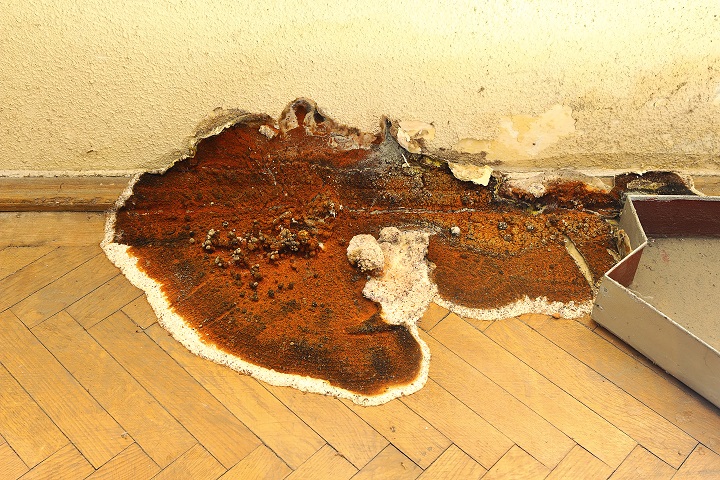Blog
What Happens if You Leave Damp Untreated?
Structural dampness is an incredibly common problem in properties around the world; however, not everyone knows how to deal with it. Although it can be tempting to simply ignore your damp problem, any form of damp will only worsen when left untreated. As a result, ignoring any damp issues will only lead to further expenses when it comes to repairs. Therefore, it’s in your best interest to act as soon as you identify a damp problem within your home.
Upon noticing damp in your property, you should contact a professional surveyor such as Garratt’s Damp & Timber. We will conduct a site survey and resolve your issue, should you choose to progress with our services.
With this being said, damp comes in many forms. So, what happens if each type of damp or rot is left untreated?
What Happens if Rising Damp Is Left Untreated?
First thing’s first, rising damp will ruin your interior décor, causing the paint to blister and flake off the walls and resulting in peeling wallpaper. In addition to this, damp issues may lead to internal woodwork damage, such as rotten skirting boards and the warping or swelling of doors and door casings.
Meanwhile, any form of damp creates the ideal environment for mould to grow. This isn’t only unsightly, but it can damage to your health, as well as spread rapidly throughout your property. Similarly, this mould will also have an unpleasant smell, which will linger in your home for some time.
In addition to these inconveniences, rising damp can cause even more serious issues if left untreated for a significant length of time. In fact, the moisture can seep into the structural timber, including floor joists. Should these become mouldy or rotten, the floor can eventually fall through. As well as timber damage, the brickwork and mortar can also be at risk from the water and salts forming. This can lead to blown pointing, crumbling bricks, and spalling, which can make your home vulnerable to penetrating damp.

What Happens if Penetrating Damp Is Left Untreated?
Speaking of penetrating damp, this can also cause a considerable amount of damage to a property. This damage includes misshapen or damaged plaster, resulting in blistering paint and fluff-like residue forming on the surface. Similarly, there may be localised patches of damp that are seemingly impossible to dry out.
As previously mentioned, all forms of damp present the threat of mould growth, meaning that penetrating damp can also lead to the appearance of mould alongside a musty odour. On top of this, the skirting boards and floor timbers will begin to rot.
Quite simply, lingering penetrating damp will lead to the deterioration of your property’s fabric, including the ceilings, floors, walls, and timber. Unlike rising damp, penetrating damp can occur at any level of your property.
What Happens if Dry Rot Is Left Untreated?
Dry rot is one of the most severe forms of damp that can occur in a building and, if left untreated, the potentially irreversible damage can be inflicted on the property. Dry rot is a type of fungal decay that occurs when wood becomes too wet, leading to the timber being attacked by wood-destroying fungus.
This type of rot will rapidly spread across and behind masonry, resulting in the destruction of all timber in its path. Dry rot can affect old and new buildings alike and leaving it untreated can be detrimental to your property’s structural integrity, which can lead to a complete collapse.
The name “dry rot” comes from the dry and stiff appearance of the affected timber. The wood gains this appearance due to the fact that the fungus sets out to attack the wood, which results in its breakdown, leading to the rotting and weakening of the structure.
Furthermore, although untreated dry rot itself isn’t a threat to human health, the presence of dry rot often indicates increased levels of condensation and dampness. In turn, this can lead to respiratory problems, as well as further issues for your property, such as mould growth, woodworm, and wet rot.
What Happens if Wet Rot Is Left Untreated?
Following on from the mention of wet rot, this too can cause significant damage to a property when left untreated. Wet rot presents itself in the form of fungal growth on timber, weak or discoloured timber, moving floorboards, softened or cracked timber, and a musty or damp odour.
Wet rot doesn’t spread to the same extent as dry rot, but this doesn’t mean it’s any less dangerous to your building’s structural integrity. The poor weather conditions in the UK mean that wet rot is relatively common, making the protection against it absolutely imperative.
As with most types of rot, if left untreated, wet rot can completely destroy a property.
Treat Your Property Defects with Garratt’s Damp & Timber Ltd
Here at Garratt’s, we’re equipped to assess and treat all manner of property defects. Get in touch to learn more about what we can do for you today.
Archived Articles
Recent
-
18 Mar 2024
How to Get Rid of Damp in Bedrooms
While it may seem more logical that kitchens and bathrooms are more prone to damp, it may be surprising for…
-
13 Nov 2023
Benefits of Tanking Your Basement
While basements have been a staple of home construction in multiple countries, they are still a relatively new concept in…
-
13 Nov 2023
Taking Action on Fixing Damp
Damp is a widespread problem in properties across the UK; however, this doesn’t stop the fact that it’s a serious…








